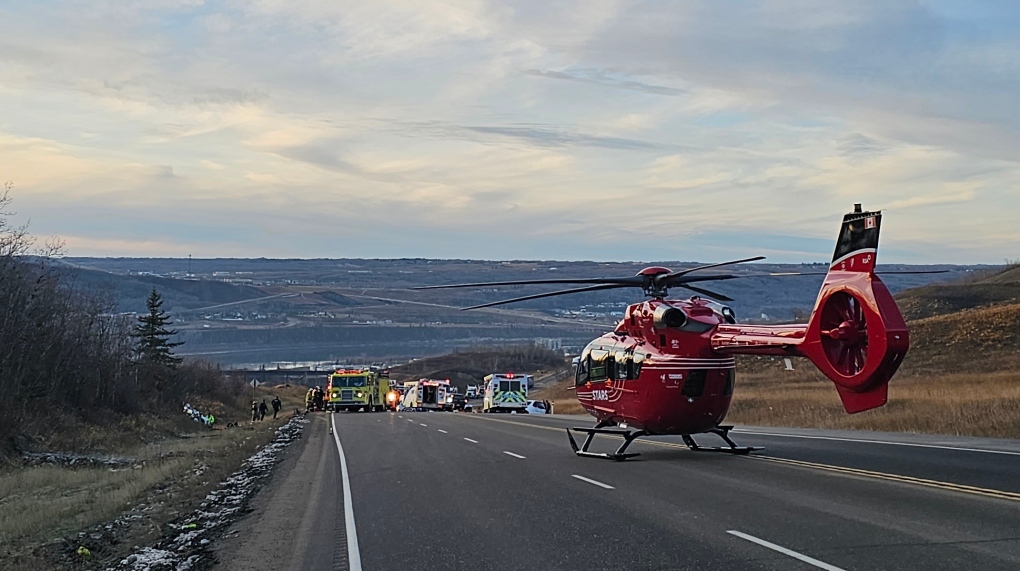Today, we’re going to talk about a topic that is of utmost importance when it comes to air ambulance services: response time. When a medical emergency strikes and time is of the essence, the speed at which an air ambulance can reach the scene can make a critical difference. We’ll explore why response time matters, the factors that can affect it, and how air ambulance providers strive to minimize this crucial time lapse. So, buckle up and get ready to learn about the vital role of speed in air ambulance response time.
What is Air Ambulance Response Time?
Air ambulance response time refers to the amount of time it takes for an air ambulance to reach the scene of an emergency or accident. When a medical emergency or critical situation arises, prompt and timely response by an air ambulance can be crucial in saving lives. The response time includes the time it takes for the air ambulance to be notified, prepare for takeoff, fly to the location, and land safely.
Definition
In simple terms, air ambulance response time is the time it takes for an air ambulance to reach the location of a medical emergency or accident. It is a measure of how quickly emergency medical services can be provided to those in need. The response time is often measured from the moment the emergency call is received by the dispatch center to the arrival of the air ambulance at the scene.
Importance of Response Time
The importance of air ambulance response time cannot be overstated. During medical emergencies, every second counts, and a delayed response can result in loss of life or worsening of the patient’s condition. Air ambulances are often called upon to transport patients with critical injuries or medical conditions that require specialized care that may not be available locally. Quick response times ensure that patients receive the necessary medical attention as soon as possible, increasing their chances of survival and recovery.
Factors Affecting Air Ambulance Response Time
Several factors can influence air ambulance response time, and it is vital to understand these factors to improve and optimize the response times.
Geographic Location
The geographical location of an emergency plays a significant role in response time. In remote or rural areas, air ambulances may need to cover vast distances to reach the scene, increasing response time. On the other hand, in urban areas, the presence of traffic congestion and restricted landing areas can also hamper response times.
Availability of Air Ambulances
The number of air ambulances available in a specific region can greatly affect response time. In areas with a limited number of air ambulances, the chances of delays and longer response times increase. Adequate availability of air ambulances ensures a prompt response to emergencies, minimizing the risk of complications for patients.
Weather Conditions
Weather conditions, such as fog, heavy rain, or strong winds, can hinder the ability of air ambulances to reach the scene quickly. Poor weather conditions may require air ambulances to delay takeoff or navigate through adverse conditions, leading to longer response times. Monitoring weather conditions and having contingency plans in place are essential for efficient air ambulance operations.
Traffic and Obstacles
In urban areas, traffic congestion and the presence of obstacles, such as tall buildings or highway construction, can impede the timely arrival of air ambulances. These factors can cause delays in reaching the scene, potentially compromising patient care. Coordinating with ground emergency services and utilizing real-time traffic updates are strategies to mitigate the impact of traffic and obstacles on response times.
Response Time Standards
To ensure a consistent and reliable air ambulance response, various standards have been established at both the international and national levels.
International Standards
At the international level, organizations such as the International Civil Aviation Organization (ICAO) and the International Air Ambulance Alliance (IAAA) have developed guidelines and recommendations for air ambulance response times. These standards aim to promote safety, efficiency, and patient care during air ambulance operations globally.
National Standards
Many countries have their own specific response time standards for air ambulances. These standards take into account the unique geographical, infrastructural, and logistical factors of each country. National standards play a crucial role in ensuring that air ambulance services are tailored to the specific needs of the population they serve.

Improving Air Ambulance Response Time
Efforts are continuously being made to enhance air ambulance response times. Several strategies and initiatives have been implemented to achieve this goal.
Enhanced Dispatch Systems
Using advanced dispatch systems that integrate real-time information, such as location tracking and traffic updates, can significantly improve response times. These systems enable efficient coordination between the dispatch center, air ambulance crew, and ground emergency services, ensuring a seamless response.
Better Accessibility to Landing Zones
Improving accessibility to landing zones is vital for reducing response times, especially in urban areas. Identifying suitable landing zones, establishing landing pads, and minimizing obstacles can facilitate quicker arrival and departure of air ambulances. This requires close collaboration between air ambulance operators, local authorities, and other relevant stakeholders.
Collaboration with Ground Emergency Services
Effective collaboration between air ambulance services and ground emergency services can lead to faster response times. Coordinating efforts, sharing information, and streamlining communication channels between these services enhances the overall emergency response system. This collaboration ensures a synchronized and swift response to emergencies, benefiting patients requiring critical care.
Staffing and Training
Proper staffing and training of air ambulance crews are essential for efficient response times. Highly skilled medical and aviation professionals, equipped with the necessary knowledge and expertise, can make quick and informed decisions during emergencies. Regular training programs, including simulation exercises and scenario-based training, help maintain and enhance the proficiency of air ambulance crews.
Utilizing Air Traffic Control
Collaboration with air traffic control authorities can contribute to faster response times by ensuring a smooth flow of air traffic and minimizing delays. By coordinating with air traffic control, air ambulances can receive priority clearance and optimized routing, reducing overall travel time. This collaboration is crucial for both domestic and international air ambulance operations.
Technology’s Role in Reducing Response Time
Advancements in technology have played a significant role in improving air ambulance response times. Several technological tools and innovations have been adopted to enhance the efficiency and effectiveness of air ambulance operations.
Use of GPS and Navigation Systems
The integration of GPS and navigation systems in air ambulances enables accurate route planning, reducing response times. These systems provide real-time tracking, route optimization, and guidance to air ambulance pilots, ensuring the fastest and safest routes are followed. GPS and navigation systems also enhance situational awareness, allowing crews to adapt quickly to changing circumstances.
Remote Monitoring and Communication
The use of remote monitoring and communication systems enables medical personnel to assess and communicate with patients onboard air ambulances. Real-time vital signs monitoring, video conferencing, and telemedicine solutions allow healthcare professionals to provide immediate guidance and interventions. This technology ensures that patients receive timely and appropriate care even before reaching the healthcare facility.
Medical Equipment Onboard
Equipping air ambulances with advanced medical equipment and technologies can significantly reduce response times. Having essential medical equipment readily available onboard allows medical professionals to start interventions and provide critical care while en route to the hospital. Portable monitoring devices, defibrillators, and specialized medical kits ensure that patients receive the necessary medical attention without delay.
Response Time Challenges in Rural Areas
Rural areas present unique challenges to air ambulance response times due to limited infrastructure and resources.
Limited Infrastructure and Resources
In rural areas, the availability of suitable landing zones and medical facilities may be limited. This can result in longer transit times for air ambulances as they navigate through vast expanses of land or rough terrains. Developing and maintaining adequate infrastructure, including landing pads and accessible roads, is crucial for reducing response times in rural areas.
Navigating Vast Distances
Covering vast distances in rural areas can be time-consuming and challenging. Air ambulances may need to fly longer routes or refuel at intermediate locations, increasing overall response times. Proper planning of flight trajectories and the establishment of regional air ambulance bases can help mitigate these challenges.
Availability of Landing Zones
Identifying suitable landing zones in rural areas can pose challenges due to the limited number of open spaces, such as fields or clearings. This can delay the landing and takeoff of air ambulances, prolonging response times. Collaborating with local authorities and landowners to identify and maintain landing zones can enable quicker access to patients in rural areas.
Response Time Challenges in Urban Areas
Urban areas also present their own set of challenges when it comes to air ambulance response times.
Traffic Congestion
In densely populated urban areas, traffic congestion can hamper the prompt arrival of air ambulances. The presence of congested roads and highways may require air ambulances to alter routes or find alternative landing areas, resulting in increased response times. Communication and coordination with ground emergency services, along with real-time traffic updates, are essential for navigating through traffic and optimizing response times.
Restricted Landing Areas
Urban areas often have limited landing areas available for air ambulances. Tall buildings, overhead power lines, and other structures can present obstacles and restrict the choice of landing zones. Identifying suitable landing areas and collaborating with local authorities to ensure their accessibility is crucial for reducing response times in urban settings.
Coordinating with Ground Emergency Services
The coordination between air ambulance services and ground emergency services in urban areas can be challenging due to the complex and crowded environment. Establishing effective communication channels and protocols ensure that ground emergency services can efficiently guide air ambulances to the scene. This coordination minimizes delays and optimizes response times, benefiting patients in critical condition.
Case Studies: Successful Air Ambulance Response Time
Several real-life situations demonstrate the impact of air ambulance response times in different scenarios.
Emergency Response in Natural Disasters
During natural disasters, such as earthquakes, hurricanes, or floods, air ambulances play a crucial role in providing emergency medical assistance. Their ability to respond quickly can mean the difference between life and death for those affected. By swiftly airlifting injured individuals to hospitals equipped to handle their specific needs, air ambulances can save lives and alleviate suffering in these challenging situations.
Rescues in Remote and Inaccessible Locations
Air ambulances are often called upon to carry out complex rescues in remote and inaccessible locations, such as mountains, forests, or offshore areas. These situations require precise execution and rapid response to evacuate individuals in critical condition or facing life-threatening circumstances. Successful air ambulance response times in these scenarios have saved countless lives and demonstrated the value of these specialized services.
Critical Patient Transfers
Air ambulances also play a vital role in transferring critically ill or injured patients between healthcare facilities. When time is of the essence, air ambulances can rapidly transport patients to specialized medical centers that can provide the necessary interventions. Whether transferring patients for life-saving surgeries or specialized treatments, air ambulance response times are crucial in ensuring optimal patient outcomes.
The Importance of Communication and Coordination
Effective communication and coordination are imperative for optimizing air ambulance response times.
Effective Communication Systems
Establishing reliable and efficient communication systems is essential for prompt and coordinated responses to emergencies. These systems ensure seamless communication between dispatch centers, air ambulance crews, ground emergency services, and medical facilities. Clear and concise communication facilitates quick decision-making and minimizes response times, ultimately benefiting the patients.
Collaboration Between Air Ambulance Providers
Collaboration between different air ambulance providers is crucial, especially during major incidents or emergencies when multiple air ambulances may be needed simultaneously. Sharing resources, coordinating efforts, and establishing standardized protocols can enhance the overall air ambulance response system. This collaboration ensures that the right resources are dispatched promptly, optimizing response times and patient care.
Coordination with Hospitals and Ground Services
Close coordination between air ambulance services, hospitals, and ground emergency services is vital for a smooth response. This includes sharing medical information, coordinating treatment plans, and providing real-time updates on patient status. Effective coordination streamlines the entire emergency response process, reducing delays and improving patient outcomes.
Conclusion
Air ambulance response time is a critical factor in saving lives during medical emergencies. By understanding the various factors affecting response times and implementing strategies to overcome challenges, air ambulance services can continue to improve their efficiency and effectiveness. Technological advancements and collaborations between air ambulance providers, ground emergency services, and hospitals are instrumental in optimizing response times. As the demand for air ambulance services continues to grow, the focus on improving response times will remain crucial in providing timely and lifesaving care to those in need.



